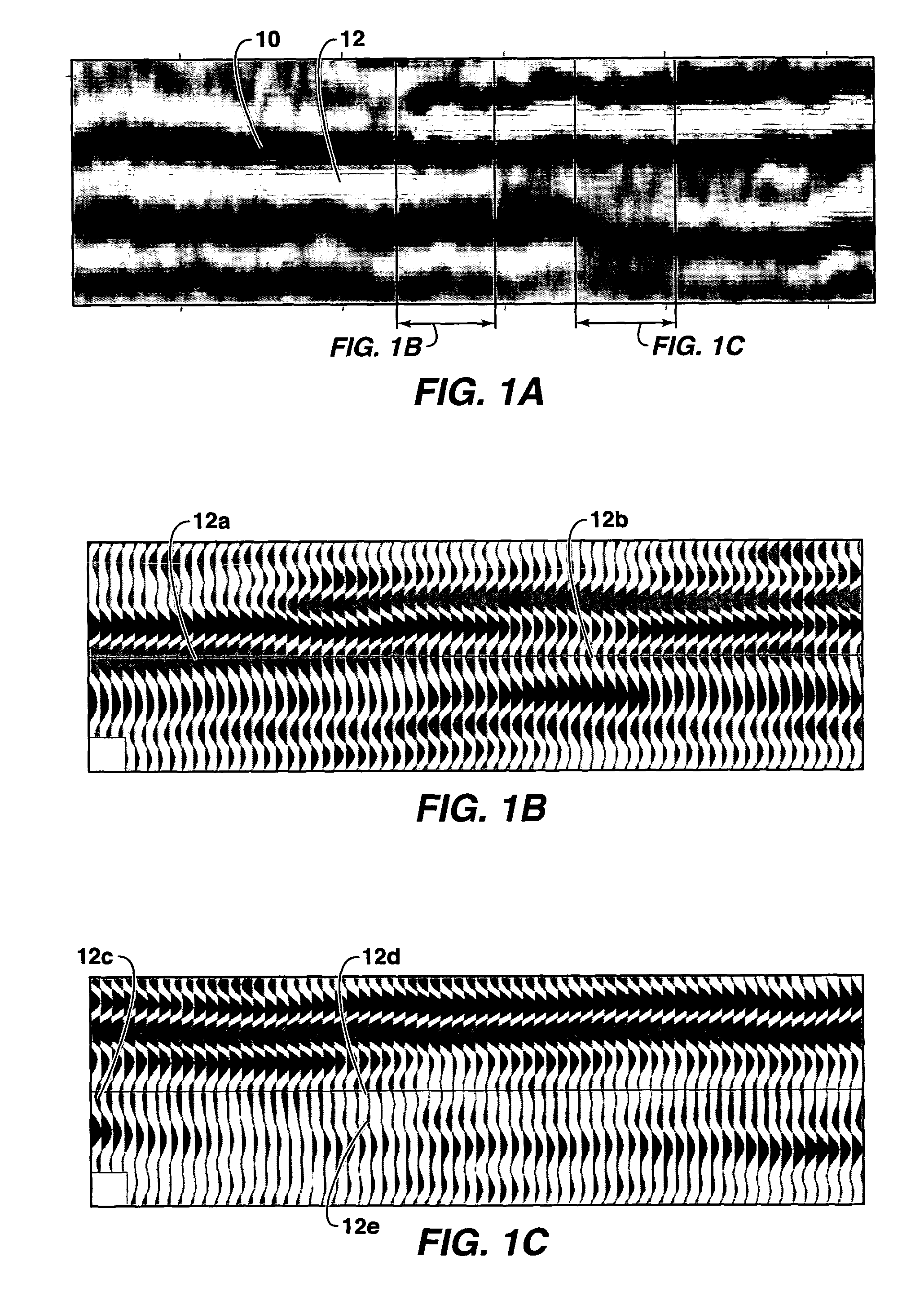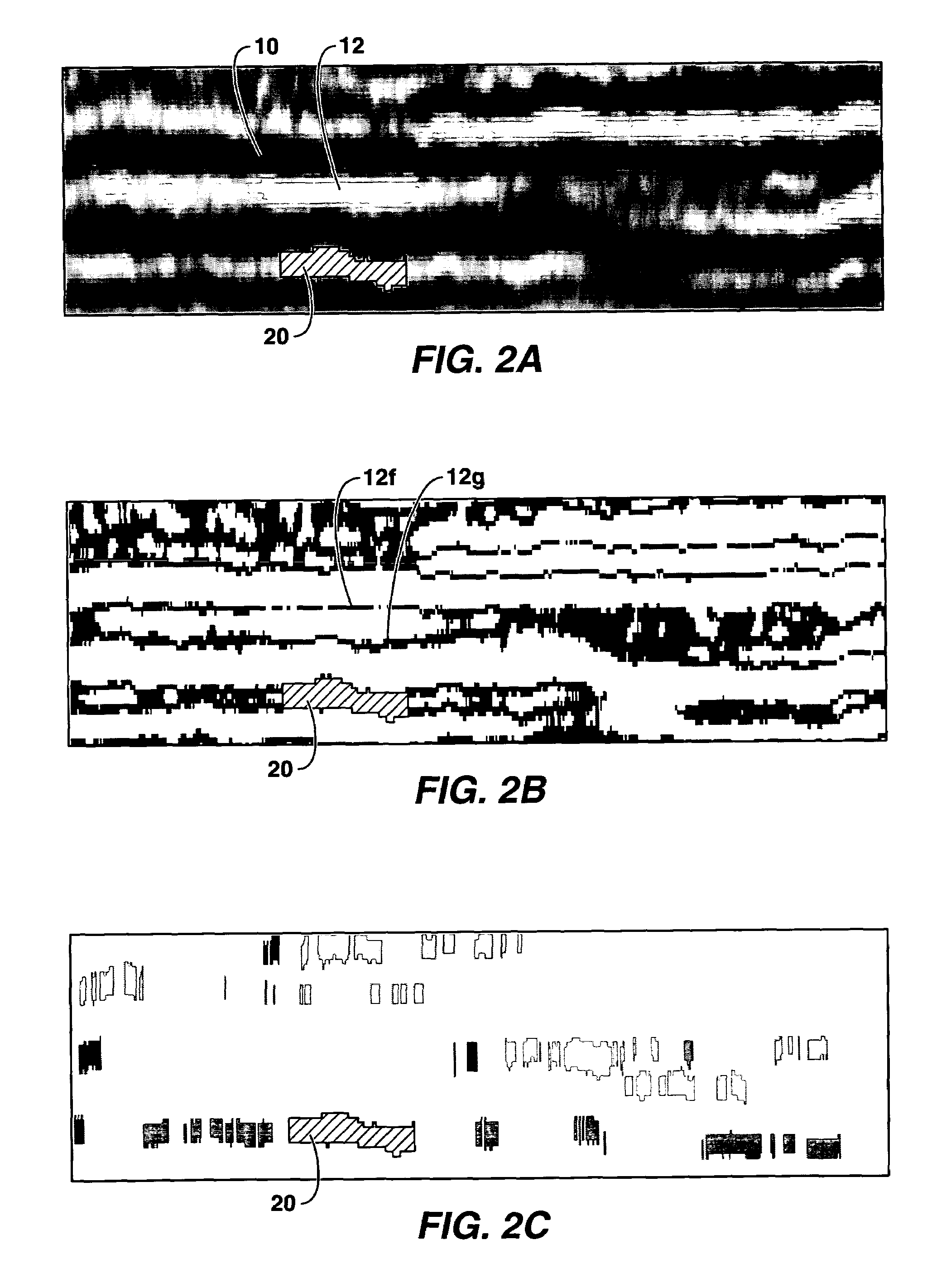Method for performing stratigraphically-based seed detection in a 3-D seismic data volume
a seismic data volume and seed detection technology, applied in the field of seismic prospecting, can solve the problems of unreliable stratigraphic and structural boundary crossing of geobodies, inability to identify geobodies with moderate or low attribute values, and inability to perform stratigraphically reasonable geobodies
- Summary
- Abstract
- Description
- Claims
- Application Information
AI Technical Summary
Benefits of technology
Problems solved by technology
Method used
Image
Examples
Embodiment Construction
[0033]The invention will be described in connection with its preferred embodiments. However, to the extent that the following detailed description is specific to a particular embodiment or a particular use of the invention, this is intended to be illustrative only, and is not to be construed as limiting the scope of the invention. On the contrary, it is intended to cover all alternatives, modifications, and equivalents that are included within the spirit and scope of the invention, as defined by the appended claims.
[0034]The present inventive method is applied to a 3-D seismic data volume for a selected seismic attribute. For example, the attribute could be acoustic impedance, and the impedance values might be obtained by inverting seismic data. Alternatively, the data volume might be values of the seismic amplitudes themselves, and the terms “seismic attribute” or “attribute” as used herein will be understood to be broad enough to encompass this. However, the selected attribute may...
PUM
 Login to View More
Login to View More Abstract
Description
Claims
Application Information
 Login to View More
Login to View More - Generate Ideas
- Intellectual Property
- Life Sciences
- Materials
- Tech Scout
- Unparalleled Data Quality
- Higher Quality Content
- 60% Fewer Hallucinations
Browse by: Latest US Patents, China's latest patents, Technical Efficacy Thesaurus, Application Domain, Technology Topic, Popular Technical Reports.
© 2025 PatSnap. All rights reserved.Legal|Privacy policy|Modern Slavery Act Transparency Statement|Sitemap|About US| Contact US: help@patsnap.com



